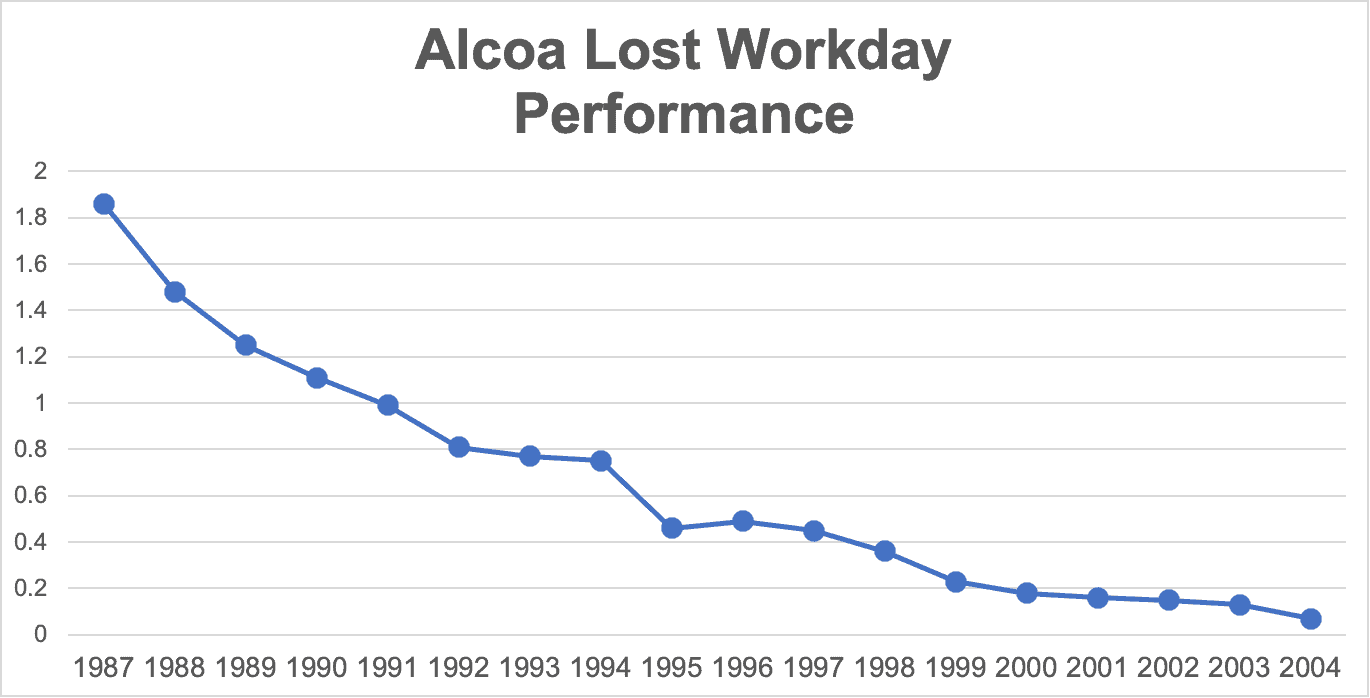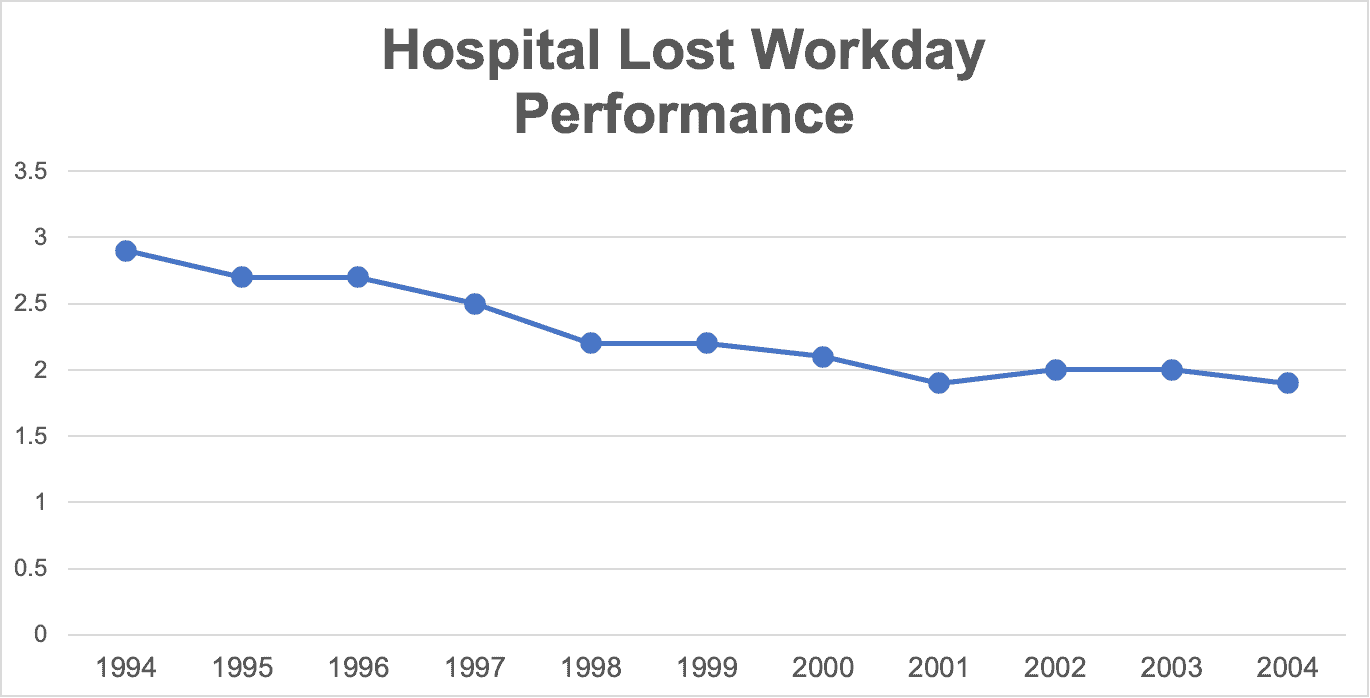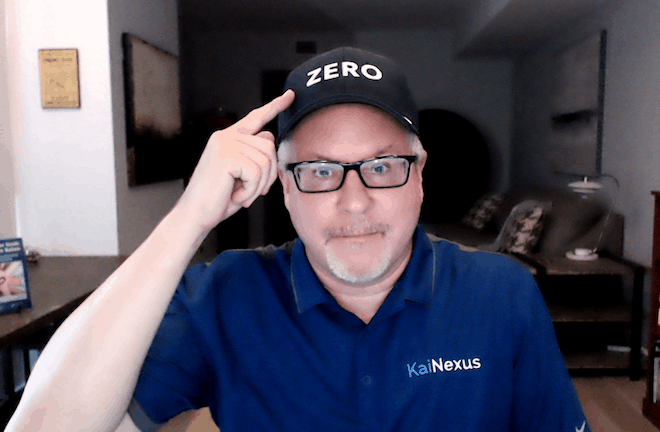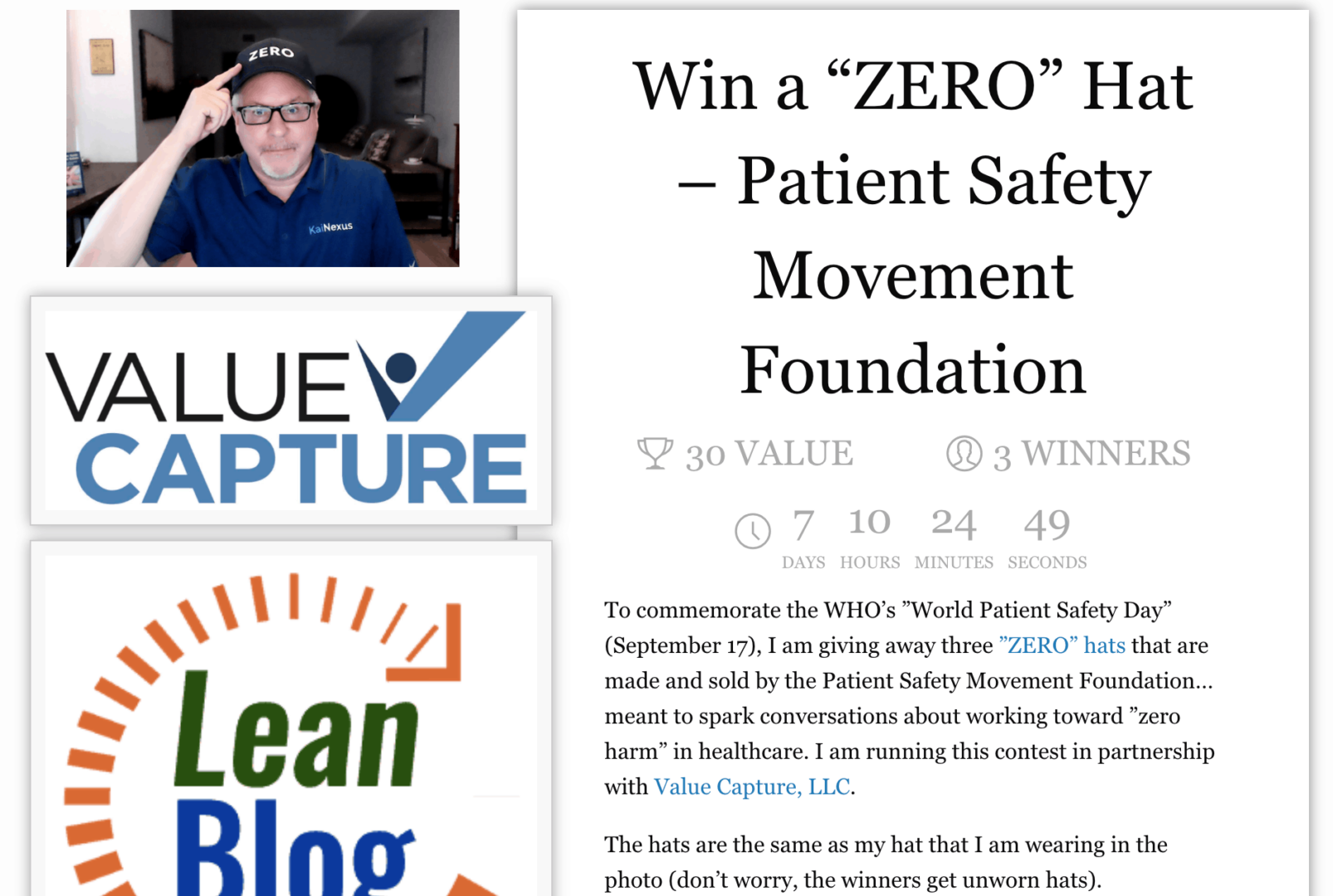Today is the World Health Organization “World Patient Safety Day 2020.”
Patient safety is not just an American healthcare issue — see some statistics I have compiled over the years. At one point, the per capita rate of people killed by preventable medical error was almost the same in the U.S. and Canada.
The theme of this year's WHO event is:
Health Worker Safety: A Priority for Patient Safety
Their call to action is:
Speak up for health worker safety!
We all need to speak up. This doesn't mean asking just the healthcare professionals to speak up. Their leaders need to speak up… and take action.
I believe in the idea that leaders need to take care of their employees and physicians so that they can then take care of the patients. Staff safety and patient safety are very much intertwined.
The WHO says…
No one should be harmed in health care.
And yet …
134 million
“adverse events occur each year due to unsafe care in hospitals in low- and middle-income countries, contributing to 2.6 million deaths annually”
and
15%
“of hospital expenses can be attributed to treating patient safety failures in OECD countries”
What Value Capture Thinks
I worked with colleagues at Value Capture to put together a video where nine of us, including myself, talk about why safety is so important to us. The question was posed in terms of patient safety, but most of us ended up also talking about staff safety because it's also important… we work with organizations to address both patient safety and staff safety.
It's also available as Episode #19 of our “Habitual Excellence” podcast.
Free Paul O'Neill Kindle Book
Speaking of habitual excellence, that was a phrase used by the late Paul O'Neill, one of the founders of Value Capture. When he was CEO of Alcoa (and when he was Treasury Secretary), he made employee safety the top priority — a precondition really.
You can read O'Neill's powerful words in the book A Playbook for Habitual Excellence, where he talks about what leaders must do to create safety — working toward zero harm for employees and patients.
The Kindle version of the book is FREE this week (through Friday) so please take advantage of that opportunity.
After Friday, it's just $0.99. You can also get a free PDF through Value Capture and the new paperback version is just $9.99, with all proceeds being donated.
Dr. John Toussaint wrote in the foreword to the book:
“I first met Paul at an Institute for Healthcare Improvement (IHI) meeting in the early 2000s. It was a meeting on patient safety. All he could talk about was employee safety. I didn't understand why he was talking about that at a patient safety meeting. It would take me ten years to finally understand that patient safety starts with employee safety. Without employee safety, there can be no commitment to safety at all.”
John continued and summarized O'Neill's approach:
“First, set a goal of zero workplace injuries. That is what Paul did at Alcoa and he made that company the safest in the world for workers. Duke Health has done it during Covid-19 and has achieved zero staff infections as of June 15, 2020. Leaders delivered all the personal protective equipment where and when it was needed. Leaders had a relentless focus on keeping staff (and patients) safe. In fact, leaders and staff started safety huddles each morning by reciting a pledge to “commit to zero harm for our patients, their loved ones, and ourselves.”
Second, staff safety must become the most important value in the organization. No other priority can take precedent. Torrance Memorial hospital in Los Angeles is a wonderful example. During Covid-19, instead of furloughing staff, leaders redeployed them to make face shields and disinfectant wipes and to check temperatures of staff and patients at the door. The mostly outpatient staff were thrilled — not only to have a job — but to be doing meaningful work that supported their colleagues in the ICU.
Third, make staff safety transparent. At Alcoa, everyone in the company knew when an injury occurred and what was done to make sure it never happened again. The same is true at International Hospital Corporation in Costa Rica. All injuries are reported in a daily report. Root cause analysis must be completed on injuries within 48 hours. New processes that assure the injury can't happen again are rapidly shared with everyone in the organization.
Fourth, create a daily management system that focuses on safety. This system should bubble up many problems. Safety problems should be the top priority. At Morningside Hospital, part of the Mt. Sinai health system in Manhattan, multiple daily huddles were occurring during Covid-19. Problems were quickly identified and addressed. After a patient was intubated, the respiratory arrest team reported back that the necessary PPE to protect the multiple members of the resuscitation team were not available. The huddle system led to the creation of PPE “bags-to-go.” The bags contain enough full sets of PPE for nine people and are placed on the resuscitation carts.
Finally, don't use frontline caregiver heroism as an excuse not to act. Caregivers act heroically only when there are insufficient systems in place to support getting the work done. They must develop more and more workarounds like moving the ingot by hand because the conveyor was broken. Every workaround leads potentially to a safety problem. Leaders and managers must create a management system that immediately addresses worker problems and trains the front line to solve the problems themselves.”
And, again, in the book, you can hear directly from O'Neill, as we share transcripts from speeches that he gave over the years.
In one speech, he said:
“At the top of my list was safety. I tell you why safety was at the top of my list.
One of the things I had discovered working with a lot of different organizations, every organization of any size that I've ever had anything to do with… I'll bet it's true here. There's an annual report. It says in the annual report, “Our people are our most important resource.”
It's almost like it's an obligation for people who sign their name at the bottom to say, “Our people really matter a lot. They're our most important resource.” I would say, in most places, it's not true.
If it were true [that people are our most important resource], people would not be hurt at work.
If it's your most important resource, why wouldn't you organize yourself in such a way that the people who are supposed to be your most important resource, are never hurt at work?”
O'Neill's leadership, of course, led to a dramatic decrease in worker harm at Alcoa and we can all learn from his example.

Compare that to healthcare worker safety performance over that same time… higher numbers and less improvement:

Arguably, that difference is the result of different leadership styles. Healthcare is still a dangerous place to work…
From OSHA:
“Did you know that a hospital is one of the most hazardous places to work? In 2011, U.S. hospitals recorded 253,700 work-related injuries and illnesses, a rate of 6.8 work-related injuries and illnesses for every 100 full-time employees. This is almost twice the rate for private industry as a whole.“
Recognizing the problem is the first step in working toward solving it.
Win a Free Hat
One organization that helps support this patient safety cause is the Patient Safety Movement Foundation.
I recently had the chance to interview Dr. David Mayer, the CEO of that foundation, as he was given a “Weezie's Angels” award by the Louise Batz Patient Safety Foundation (of which I am a board member and supporter).
I liked the ZERO hat that he was wearing, so I bought one from the Foundation.

We don't want “zero harm” to be an empty slogan. It requires the right kind of leadership to inspire an organization to truly get moving in that direction… the kind of leadership we saw demonstrated by the late Paul O'Neill for example. Zero harm might seem impossible, but it's the only defensible goal to set…
Enter here (must have a U.S. mailing address)

Back to Paul O'Neill for a minute… why did he think ZERO was a helpful goal?
“If you ask yourself, “What's the theoretical limit for injuries to workers?” the answer is zero. What's the theoretical limit for hospital-acquired infections? It's zero. That's the theoretical limit.
One of the things that I found really useful about this concept of a theoretical limit is it's not used to bludgeon people.
It's used to set up an intellectual construct so that you can take a measurement of where you are and compare it to what perfect looks like. It drains the swamp so you can see stuff that you couldn't easily see otherwise. I gave you the Allegheny General stuff and the two percent thing. Two percent, how many places are 98 percent good?
You can take a lot of conceit out of, “Hey, we're 98 percent perfect.” What about the 19 people who died? That's a different way to think about it. The theoretical limit, you say to yourself, “What about the 19 people who died?” They don't want to do that. It unleashes your intellectual ability to recalibrate how you think about what you're doing.”
What is your organization doing to make worker safety and patient safety not just a priority, but a daily precondition to all work?
Please scroll down (or click) to post a comment. Connect with me on LinkedIn.
Let’s work together to build a culture of continuous improvement and psychological safety. If you're a leader looking to create lasting change—not just projects—I help organizations:
- Engage people at all levels in sustainable improvement
- Shift from fear of mistakes to learning from them
- Apply Lean thinking in practical, people-centered ways
Interested in coaching or a keynote talk? Let’s start a conversation.









![When Was the Last Time a Leader Around You Admitted They Were Wrong? [Poll]](https://www.leanblog.org/wp-content/uploads/2025/07/Lean-Blog-Post-Cover-Image-2025-07-01T212509.843-100x75.jpg)